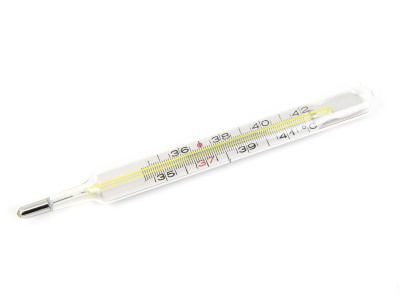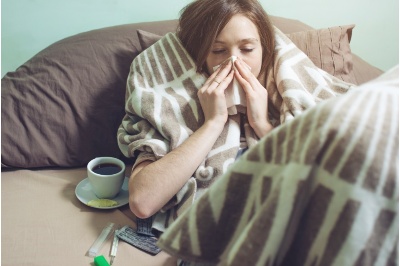Fever: what need to know?
See the complete content in Infermera Virtual
1. What is the fever?

2. When have fever?
- Subfeverish or slight fever: axillary temperature between 37.5 and 38 ºC.
- Moderate fever: axillary temperature between 38 and 39 ºC.
- Tall fever: axillary temperature between 39 and 40.5 ºC.
- Very tall fever or hyperpyrexia: axillary temperature higher than 40.5 ºC. It is a situation of commitment vital that it can cause major damages in the person.
3. How to act with fever?

General measures
During the phase of chills:
- Limit the physical activity and sources of emotional stress.
- Maintain the environmental temperature between 21-22ºC.
- Not withdrawing the clothes and to offer supplementary blankets and clothes.
- Moisturize with water and juices.
- Give a bland diet and rich in nutrients.
During the phases of plateau and declension
- Limit the physical activity and sources of emotional stress.
- Maintain the environmental temperature between 21-22 ºC.
- Avoid the excess of coat without causing chills.
- Maintain dry article of clothings and the bed linen.
- Moisturize with water and juices.
- Give a bland diet and rich in nutrients.
- Maintain the mucosae of the clean mouth and moist.
Médidas physics
- Baños of lukewarm water: 2ºC under the body temperature that has the person.
- Sprinkle the skin with annealed water.
- Apply on the skin surface towels or soaked sanitary napkins in lukewarm water.
- Apply sources of air (fan).
Pharmacological measures
Medicines that are used to discuss the fever are denominated antithermal or antipyretics.
4. Situations of alert and special attention (adults in work age):
- Higher temperature of 40 ºC.
- Fever that it does not disappear with recommended pharmacological measures after three days of use.
- When there are illnesses previous (heart illnesses, liverworts, renal, tumour processes, illnesses of the immune system, (for example, HIV), endocrine illnesses (for example, diabetes), etc.
- When drug therapies of the type are done corticosteroid drugs.
- During the pregnancy or in period of breastfeeding
- When together with the fever appear other symptoms as:
- Very strong pain of head.
- Constant vomits.
- Difficulty when breathing.
- Stiffness of occiput.
- Non usual sensitivity to the light, disorientation or changes in its usual behaviour.
5. Recommendations
Ventilate the room:
- Ventilated and atmosphere room untroubled and relaxed.
- Give broad spaces or that there is a reduced number of people.
Maintain a good hydration and nutrition:
- Maintain an adequate hydration with water and juices to prevent the dehydration.
- They should not use stimulants as the coffee, the tea or the tail, since these are diuretic and they can promote to the dehydration.
- Maintain a balanced nutrition with energetic foodstuffs of tall content vitamínico and protean (for example, yoghurt, egg, fruit shakes, etc.), in small and frequent intake.
- Maintain hydrated and clean the oral mucosa to maintain the oral hygiene: dental brush, dentifrice, colutorios and water.
Promote changes of position:
- Decrease the physical activity and to promote the periods resting.
- Use comfortable and light clothes to promote the movement and to decrease the sudoración.
- If the person is prostrate in bed, to promote changes of posture
- Try to rest and to sleep the maximum thing possible
- Increase the comfort of the person with following activities according to the general measures, physics and pharmacological indicated.
Prioritise activities of the day by day:
- Understand the importance of the repose to discuss the fever.
- Recognise that the fever is a faddish situation in most cases.
- Try to decrease the anxiety that sometimes generates the work absenteeism or the fact of not being able to to carry out everyday activities.
- Make good use of moments without fever and great comfort to carry out those activities that the situation allows and they produce satisfaction.
6. Clarifications:

- The fever is not an illness in if same; it is a symptom of defense of the organisation before certain external agents.
- Is owed to avoid the application of ice on the skin, bathrooms with cold water and frictions with community or alcohol.
- They should not take antibiotics without medical prescription.
- The non treated fever does not go up anymore of way incontrolada. With processing, the temperature not cancellation until normal limits, but instead that the antithermal ones achieve a reduction of temperature out of 1 ºC and 1.5 ºC.
- The disappearance of fever after the administration of an antithermal one does not indicate the disappearance of the cause.
- The tall fever is present does not indicate necessarily that the cause is serious.
